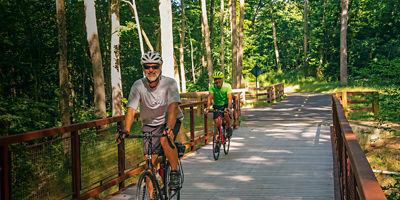
These often overlooked platforms connect you to your bike and provide a place to stand. Most fundamentally, they take the power from your legs and transfer it to the drivetrain and wheels, propelling you forward. So it shouldn’t be a surprise, then, that many new bicycles come without pedals (or with the cheapest plastic option). How you connect yourself to your bike is such an important and personal decision that most companies stay out of the way and let you make up your own mind. Don’t get overwhelmed with the many bike pedal options and styles available—we’re here to help.
First, Ask Yourself These Questions:
How comfortable am I on my bicycle?
Many pedals allow you to connect yourself to your bike in combination with a cycling shoe; knowing whether or not you’re prepared to “clip-in,” will help you wade through many of the more confusing parts of buying pedals.
How do I ride my bike?
Determine your favored discipline and nail down details, especially off the bike, like if you use it for commuting or running errands. This impacts shoe types that match your pedal—as does efficiency over long distances or maintaining power uphills, where “clipping in,” benefits the rider much more than if you’re bombing downhill singletrack.
What shoes do I have?
Many pedals work as a system with your riding shoe. The pedal and riding shoe pair with a mechanical connection. There are few styles of pedals and shoes, so make sure your shoe matches the pedal, or, if you already have riding shoes, that the pedals match.
How much money am I willing to spend?
Pedals range from affordable to debilitatingly expensive based on the materials and weight. Decide on priorities and budget. For many riders, the weight savings of a few grams is not worth the extreme increase in price of going from a metal pedal to a carbon fiber pedal.
One bike to rule them all, or a specialized machine?
Are these pedals needed on a single bike for all different types of riding, or are they needed on a bike for a single discipline like downhill mountain biking or road riding? This will help you decide between a more specialized or generalized pedal.























